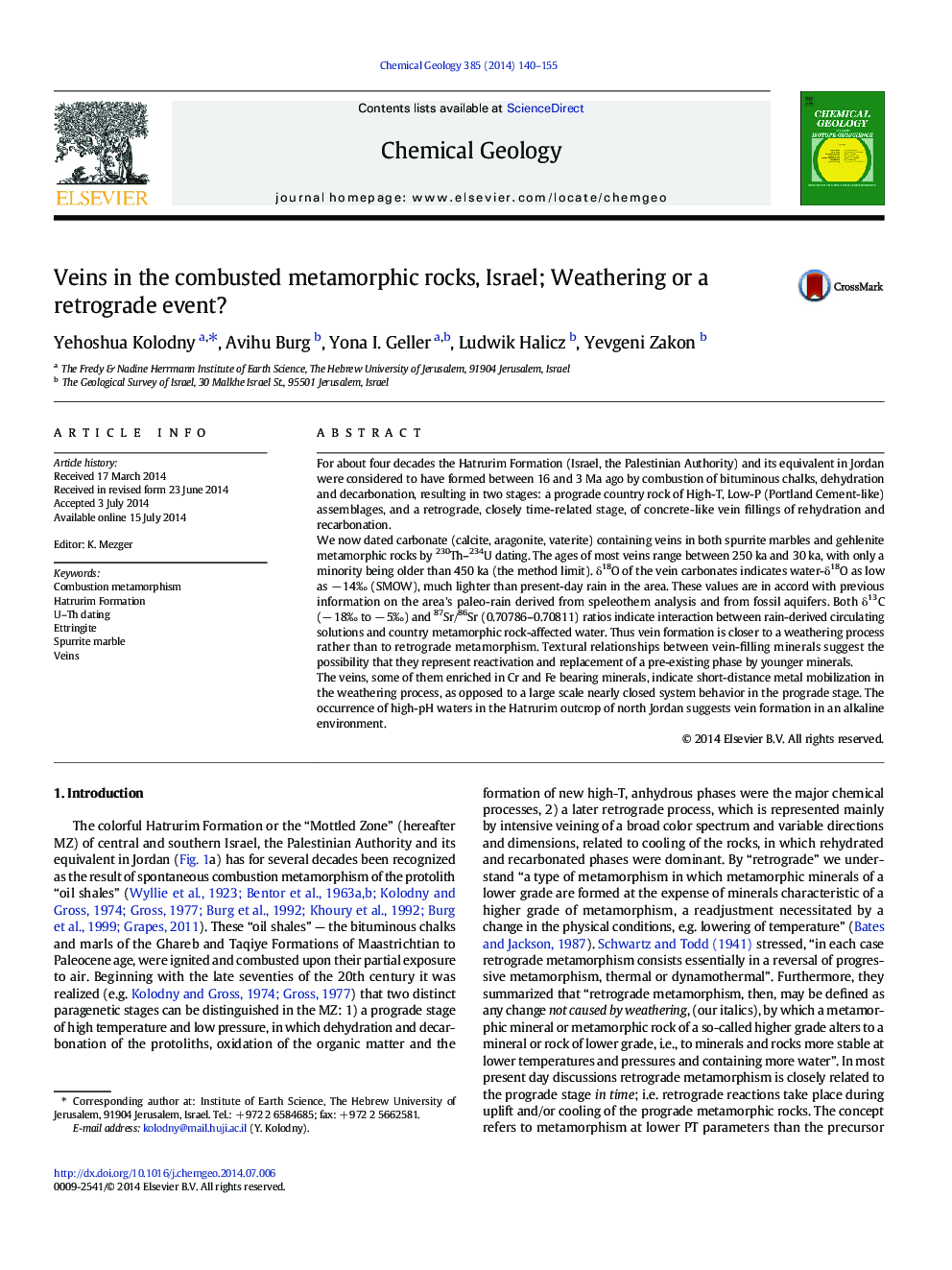| کد مقاله | کد نشریه | سال انتشار | مقاله انگلیسی | نسخه تمام متن |
|---|---|---|---|---|
| 4698719 | 1637587 | 2014 | 16 صفحه PDF | دانلود رایگان |
• Veins in the Hatrurim combustion metamorphic rocks were dated by 230Th/234U disequilibrium as mostly younger than 450 ka.
• The prograde High-T Low-P metamorphic sequence was formed 16 to 3 my ago.
• Thus veins are closer related to weathering rather than to retrograde metamorphism.
• The veins were precipitated from high-pH waters of meteoric origin.
• The possibility is considered that veins are partly of older origin reactivated in the Pleistocene.
For about four decades the Hatrurim Formation (Israel, the Palestinian Authority) and its equivalent in Jordan were considered to have formed between 16 and 3 Ma ago by combustion of bituminous chalks, dehydration and decarbonation, resulting in two stages: a prograde country rock of High-T, Low-P (Portland Cement-like) assemblages, and a retrograde, closely time-related stage, of concrete-like vein fillings of rehydration and recarbonation.We now dated carbonate (calcite, aragonite, vaterite) containing veins in both spurrite marbles and gehlenite metamorphic rocks by 230Th–234U dating. The ages of most veins range between 250 ka and 30 ka, with only a minority being older than 450 ka (the method limit). δ18O of the vein carbonates indicates water-δ18O as low as − 14‰ (SMOW), much lighter than present-day rain in the area. These values are in accord with previous information on the area's paleo-rain derived from speleothem analysis and from fossil aquifers. Both δ13C (− 18‰ to − 5‰) and 87Sr/86Sr (0.70786–0.70811) ratios indicate interaction between rain-derived circulating solutions and country metamorphic rock-affected water. Thus vein formation is closer to a weathering process rather than to retrograde metamorphism. Textural relationships between vein-filling minerals suggest the possibility that they represent reactivation and replacement of a pre-existing phase by younger minerals.The veins, some of them enriched in Cr and Fe bearing minerals, indicate short-distance metal mobilization in the weathering process, as opposed to a large scale nearly closed system behavior in the prograde stage. The occurrence of high-pH waters in the Hatrurim outcrop of north Jordan suggests vein formation in an alkaline environment.
For four decades the combustion-metamorphic Hatrurim Fm. (Israel, Jordan) has been considered as consisting of two phases: a prograde high-T–Low-P phase (Portland Cement-like), which occurred 16 to 3 Ma ago, and a retrograde vein-filling phase (concrete-like) closely following the combustion. Recent dating by 230Th–238U has shown that the veins were filled mostly in the last 250 ka and thus represent weathering rather than retrograde metamorphism. The recent dates are supported by isotopic analyses of C, O and Sr.Figure optionsDownload as PowerPoint slide
Journal: Chemical Geology - Volume 385, 14 October 2014, Pages 140–155
